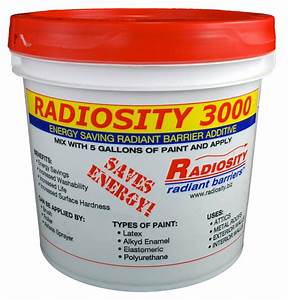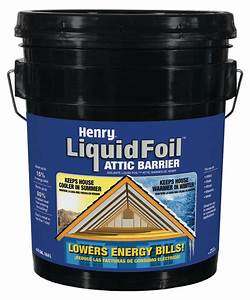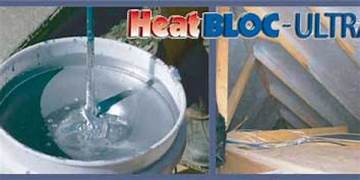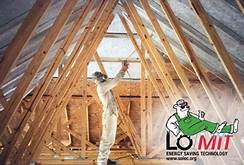One of the major misconceptions in the insulating paint field is that “ceramic paints” can be used to reduce attic temperatures and lower cooling energy costs. However, the application of a “ceramic paint” to the underside of roof sheathing may increase the attic temperature because “ceramic paints” typically have a higher emittance than the sheathing deck. If a paint does not conform to “Standard Practice for Installation and Use of Interior Radiation Control Coating Systems in Building Systems”, it should not be considered for interior applications in the attic.
You may have recently heard some Radio/TV ads talking about an “Amazing Radiant Barrier Paint that is applied to the underside of your roof”. And how it “reflects” over 75% of the heat to keep your attic cooler and save you money on your utility bills.





Let’s get some facts straight. There is NO such thing as RADIANT BARRIER PAINT.
The term “Radiant Barrier” is supposed to describe products that “Reflect” over 90% of radiant energy (think light colored and/or shiny surfaces like aluminum, silver and gold) or have an emissivity of less than .10. This means they can only “Release” less than 10% of energy as radiant heat (think a potato wrapped with foil to keep heat from being released).
The term “Radiant Barrier” has been hijacked by the paint installers to try to confuse consumers into thinking they are the same. This is like hamburger calling itself a prime steak.
Paints like Sherwin Williams E-Barrier, STS Coatings HeatBloc or Solec LO/MIT are NOT the same as radiant barrier foil. FTC has stopped some of this fraudulent advertising and lawyers have won lawsuits on the behalf of customers who thought they were being sold a “radiant barrier” that would save them 30% to 50% off their utility bills. To offset this disappointment, some companies have resorted to doing things like giving away free solar fans. Sure, if you put an attic fan in the attic it will decrease the attic temperature and could even get it close to outside temperature. Attic Fans do a better job of reducing attic temperatures than coatings.
Paint products technically have their own name. They are called Interior Radiation Control Coatings or IRCC’s for short. This is not as cool as being called a “Radiant Barrier”. Ironically, most paints don’t even qualify to be an IRCC since the definition of an IRCC is a product that reflects at least 75% or emits less than 25% of radiant heat. Here are some test results of radiant barrier paints.
Paints run into other challenges. Because radiant barrier paints are “applied” rather than “installed” you get inherent variables in the application process. First, how can you tell without testing if the product was put on too thick or too thin? What about painting unprimed wood with paint? Common sense says it will be absorbed by the wood and reduce the “smoothness” required for a good low emissivity surface. You will also need to paint the deck AND the rafters to get the maximum benefit.
Finally, what about cheating? These radiant barrier paints are really EXPENSIVE, like $50 per gallon. Notice that the best paint still emits 22% of the radiant heat, compared to only 3% for radiant barrier foil. Some paints claim to be award winning, although what award they are receiving still remains to be identified or significant. I’ve heard and read about guys using cheap silver paint, or mixing water with the good paint to extend coverage and reduce costs, which will also reduce the effectiveness of radiant barrier paints. I’m sure there are many honest installers, but watch out for the bad apples.
The reality is that most radiant barrier paint products end up reducing radiant heat into the attic by about 20-40%. Solar Attic fans offer about the same savings.
Don’t believe anyone that says that radiant barrier paint is as good or as effective as attic insulation. And remember, there is technically NO such thing as radiant barrier paint.
Insulating your home should start with a home energy analysis to determine the right path a smart home energy plan. Beware of some “Too Good to be True” promises of energy cost savings. Simple, tried and true products are easily and readily available to make your home more energy efficient. Attic insulation, Air Sealing, and proper ventilation are the best ways to reduce your energy bills. Get your free energy audit today. Aladdin Insulation 678-528-7115
